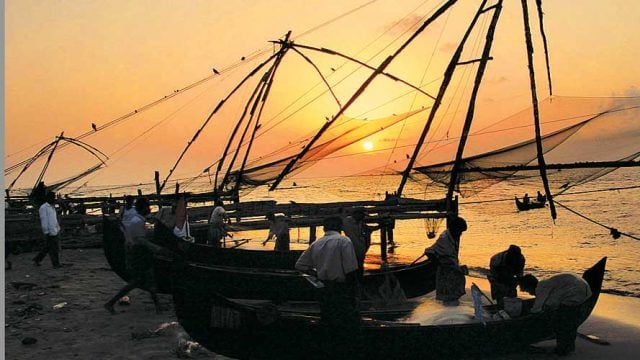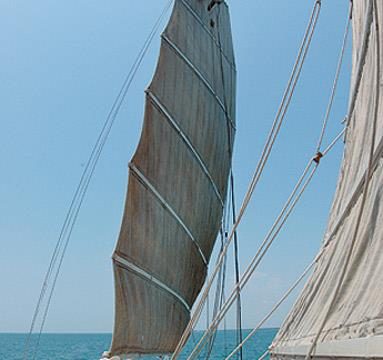My first memory of the Chinese fishing nets of Kochi is from my parent’s photo album. The
Fortunately or unfortunately, I don’t really know, he moved to Darjeeling before I was born so the first time I saw these fishing nets was early this year, almost 30 years after my parents left. What was it like, you ask? Well, to say it was disappointing would be an understatement. And don’t get me wrong, the few fishing nets that remain are a thing of beauty in whatever condition they might be but what really broke my heart was the filth that surrounded them at the beach.

Locally known as ‘Cheena Vala’ these huge cantilevered fishing nets are believed to have been brought by sometime between 1350 and 1450 by traders from the court of Kublai Khan, some others say Chinese explorer Zhang He introduced the nets to Kochi shores. While some accounts mention that the nets were set up by the Portuguese from Macau, an erstwhile Portuguese colony. Irrespective of who brought them first, they are one of the most significant symbols of the rich exchange of culture and ideas that existed in the Indian subcontinent at the time.
Operated from the shore, these nets are set up on bamboo and teak poles and held horizontally by huge mechanisms, which lower them into the sea. They look somewhat like hammocks and are counter-weighed by large stones tied to ropes, making for an ingenious way of fishing. The entire structure of the Chinese fishing nets is about ten meters in height. Each fishing net spreads to about 20 meters over the water body and is operated by a team of some six fishermen. Each net has a limited operating depth. Due to this, an individual net cannot be repeatedly operated in tidal waters. There are different fishing nets for operation, depending on the state of the tide. The whole paraphernalia is such that that the weight of a man walking along the main beam is sufficient to cause the net to descend into the sea. The net is allowed to remain underwater for about four-five minutes, before it is raised back by tugging the ropes. The catch might not be huge but it gets sold almost instantly owing to its freshness.
These fishing nets have been in use for the last 500 years and they are one of the biggest tourist draws in Kerala. So how is it that they are vanishing so fast from the coastline of Kochi? Agreed that the huge maintenance costs and poor catch is forcing fishermen to look for other alternatives, but what are the local authorities doing to help?
Kerala
Kochi
culture




